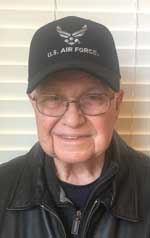The Secret War in Laos February 6, 1967

On February 5, 1967, a USAF Forward Air Controller flying a single engine Cessna O-1F Birddog spotter aircraft, call sign Nail 65, was hit by antiaircraft fire. Nail 65 was coordinating an attack by two Navy A-4 Skyhawks on an underwater bridge and North Vietnamese trucks parked under camouflage in the mountainous Mu Gia Pass on the Ho Chi Minh Trail. Nail 65 pilot was Captain Lucius “Lamar” Heiskell from an O-1 detachment of the 23rd Tactical Air Support Squadron positioned with the Air Commando Wing at Nakhon Phanom Royal Thai Air Base (RTAB). Realizing his O-1 was too badly damaged to escape the mountainous area of western North Vietnam, Heiskell managed to climb to 1,000 feet above the terrain and then bailed out. This was reported immediately by an accompanying Nail O-1 wingman to Crown, the C-130 communications center. Successful bail out from an O-1 was actually rare because their combat missions were usually close to the ground. Heiskell’s bail out was successful, but he had to spend the night on the ground, evading North Vietnamese Army (NVA) searchers, but was able to contact Crown and other USAF aircraft sparingly when he believed it was safe. First hiding his parachute, he hid himself in a “crack” and was almost walked over by searchers several times.

The Cessna O-1F had a top speed of only 110 mph, so flying in the heavily defended jagged karst mountain terrain of Mu Gia Pass in western North Vietnam was extremely dangerous. Heiskell was a 1962 graduate of the U.S. Naval Academy and a 1958 graduate of East High Schol in Memphis, Tennessee, which I also attended for few overlapping years.
On February 6, every USAF and Navy aircraft in that area of Laos and North Vietnam were listening for possible emergency signals from Nail 65. As soon as Crown confirmed his signals and approximate location, two Jolly Green Giant HH-3E helicopters from the 38th Air Rescue and Recovery Squadron (ARRS) at Udorn RTAB in northern Thailand raced 50 minutes to the area. Jolly Green 05 pilot and Korean war rescue veteran Major Patrick Wood would command the “low bird,” making the rescue and recovery. Jolly Green 36 would be the “high bird,” commanded by Korean and World War II veteran Captain Oliver E. O’Mara. The high bird had a wider view and looked out for anti-aircraft fire and acted as backup rescue if needed.
The weather was not good as they searched the area, fully aware of a dangerous 37 mm North Vietnamese antiaircraft gun near the top of a nearby ridge. Jolly Green 05 lowered its pararescue specialist, A2C Duane Hackney, into the jungle area near the most likely position of Heiskell, but he was unable to find Heiskell, who may have been too near enemy searchers to signal. As the weather turned bad, Jolly Green 05 had to hoist Hackney back up, and both helicopters flew to Nakhon Phanom Royal Thai Base (RTAB), usually referred to as NKP, to wait for clearing weather. NKP is just across the Mekong River from Laos.
In the afternoon, the weather cleared enough to make another try. This time two A1E Skyraiders (Call sign Sandy) and two A-26K Invader attack bombers (call sign Nimrod) from the Air Commando Wing at NKP accompanied them to the pickup zone. Meanwhile Crown was lining up USAF and Navy fighter-bombers to suppress NVA antiaircraft fire.
I was the “navigator-copilot” of one of the A-26K Nimrods. We could not see much except the A1E Sandys who stayed close to our left wing. Below us clouds frequently obscured the helicopters and target area, but we could hear everything on the arranged radio frequency.
About 4:00 PM, Major Wood on Jolly Green 05 dropped down and started searching and listening for Heiskell. Airman Hackney was let down into the jungle again, and this time found Heiskell, who greeted him with, “You’re beautiful.” Hackney responded with, “I’m not the stewardess,” and got Heiskell through the jungle to the Jolly Green 05 hoist.
Jolly Green 05 was already taking small arms fire. Hackney got Heiskell into the helicopter just as a 37 mm shell hit the rear of the fuselage, started a fire, and caused the helicopter to lose hydraulic power. Hackney immediately strapped his own parachute on the injured Heiskell, and began getting on a spare parachute.
About this time, I heard on the radio that Jolly Green 05 was taking lots of hits. Jolly Green 05 pilot Patrick Wood first reported:
“We have him on board. We’re lifting off.”
Then came reports in quick and increasingly intense succession::
” We’re getting a lot of ground fire. We’re hit. We’re going in! Get down here quick, Ollie! Get down here quick!”
Just as Hackney was getting one arm into a parachute, a second 37 mm burst hit Jolly Green 05 and blew Hackney out the door. Hackney was able to pull his rip cord just before hitting the treetops.
Completely out of control and on fire, Jolly Green 05 hit a steep karst cliff and exploded.
Captain Ollie O’Mara then announced Jolly Green 36 was going in to look for survivors. It was an extraordinarily courageous action. Despite their own mortal danger, Jolly Green 36 flew into intense ground and antiaircraft fire, taking many hits, making three passes over the burning crash site. Spotting Hackney waving on the side of the steep karst cliff, they lowered their own paramedic, A2C Luther Davis, down to get the injured Hackney and hoisted them both up. They then made an evasive climbing turn to avoid targeting by the 37 mm gun that had shot down Jolly Green 05.
The two A!E Sandys then engaged the enemy with a ferocious display of firepower, but the two A-26 Nimrods were held in reserve. Minutes thereafter, USAF and Navy jets took a terrible vengeance on the North Vietnamese positions. Battle-damaged Jolly Green 36 headed back to Udorn RTAB with Hackney, who later received the Air Force Cross for his actions. On February 22, he was fit enough to rescue me after bailing out of an A-26 badly damaged in a gun battle with two 37 mm guns and a .50 caliber anti-aircraft machine gun just south of Mu Gia Pass. I got to know Hackney better, when we were both members of the 41st Air Rescue Squadron in California.
O’Mara had been a P-40, P-47, and P-51 pilot in the Pacific during World War II. On one occasion, he was shot down and rescued by a submarine. O’Mara later received an Air Force Cross for a rescue mission on October 5, 1966. The February 6 mission may have given him his third Distinguished Flying Cross (DFC). O’Mara had at least two breaks in service between wars, but was soon promoted to Major, and made Lt.Col. before he retired in 1970. He was almost 87 when he died in 2008 in New Mexico. Oliver E. O’Mara, his father, was a famous shortstop for the Brooklyn Dodgers.
Jolly Green 36 had spotted two parachutes on the ground in looking for survivors. One was obviously Hackney’s. According to Hackney, none of the other Jolly Green 05 crew were wearing parachutes except rescued Nail 65 pilot Captain Lamar Heiskell.
Jolly Green 05 pilot Major Patrick Wood, copilot Captain Richard Kibbey, and flight engineer Sgt. Donald Hall, and Nail 65 O-1 pilot Lamar Heiskell were officially listed as Missing in Action (MIA) but presumed KIA. The remains of all but Heiskell were recovered in northern Vietnam in 2015. Although Captain Lamar Heiskell remains officially unaccounted for, he is on many rolls of honor considered KIA. He has a memorial stone in Memphis, listing his death as February 6, 1967. MIA personnel receive salary, benefits, and promotions until official resolution of MIA status. Heiskell, for example, is now listed as having the rank of Major. Many military decorations are awarded posthumously., but MIA records are often confidential to protect families and limit potential enemy exploitation.
Major Patrick Wood was posthumously awarded the Air Force Cross and Captain Richard Kibbey and Sgt Donald Hall were posthumously awarded the Silver Star. Duane Hackney, who survived, received the Air Force Cross. Hackney retired as a Chief Master Sergeant in 1991. He was the most decorated enlisted man in USAF history. He died of a heart attack in September 1993 at the age of 46.
On Jolly Green 36, the copilot is listed as Captain Harold W. Bradley, but I have been unable to trace him. This may be an error or misspelling, which are numerous in combat records. The flight engineer, Master Sergeant Richard Godsey, retired from the Air Force and passed away in 2018 at age 75 in Corbin, Kentucky. Paramedic Staff Sergeant Luther E. Davis was severely injured when his HH-3E Jolly Green was shot down in South Vietnam attempting to rescue and Army helicopter pilot on April 15, 1970. He died of wounds on May 20 at age 23. He was a recipient of the Silver Star and DFC. He was from Oak Ridge, Tennessee.
Only 179 Air Force Crosses for valor were awarded during the Vietnam War. It is second only to the Medal of Honor in rank. The Silver Star, DFC, and Air Medal follow in that order. The Bronze Star is roughly equivalent to the Air Medal, but the Bronze Star with valor has move prestige. The Air Rescue and Recovery Jolly Green squadrons were often called to fly both extremely dangerous combat missions as well as hazardous non-combat emergency missions. Thirty-four Jolly Green Giant HH-3E copters were lost in the Vietnam War, of which 24 were classified as combat losses. FAC missions were an important component of both combat and rescue missions. There were 122 O-1 Birddogs lost in the war, 72 of them combat losses.
The A1E Skyraiders made a terrific contribution to both combat and rescue operations.. They were slow but could carry a heavy weapons load and deliver it accurately. Moreover, they could stay on stations for a long time. There were 191 A1Es lost in the Vietnam War, 150 to combat. The A-26 Nimrods at NKP had even greater weapons load, accuracy, and station-time advantages and carried the heaviest and most successful Air Commando or Special Operations load, destroying trucks on the Ho Chi Minh Trail. The OnMark Corporation converted only 40 old B-26s to the Air Commando//Special Operations A-26K (also known as the B-26K and A-26A). Of these forty, 22 were lost.
Having read several accounts of the February 6, 1967, Nail 65 rescue attempt and comparing them to my own memory of the event, some details are conflicting, but that is the nature of combat tensions and reporting. One summary of interviews on the Nail 65 rescue written for the International Birddog Association by “F-4 Phantom Phixer” Steve Whitton in 2017 is particularly rich in personal detail. See also Jolly Green 05, with photos, by Whitton
May the tradition of extraordinary courage exhibited by Jolly Greens 05 and 36 on February 6, 1967, continue to bless our country.
“That others may live”—the motto of Air Force Pararescue and many ARRS squadrons.









 Mike Scruggs is the author of two books: The Un-Civil War: Shattering the Historical Myths; and Lessons from the Vietnam War: Truths the Media Never Told You, and over 600 articles on military history, national security, intelligent design, genealogical genetics, immigration, current political affairs, Islam, and the Middle East.
Mike Scruggs is the author of two books: The Un-Civil War: Shattering the Historical Myths; and Lessons from the Vietnam War: Truths the Media Never Told You, and over 600 articles on military history, national security, intelligent design, genealogical genetics, immigration, current political affairs, Islam, and the Middle East. 


